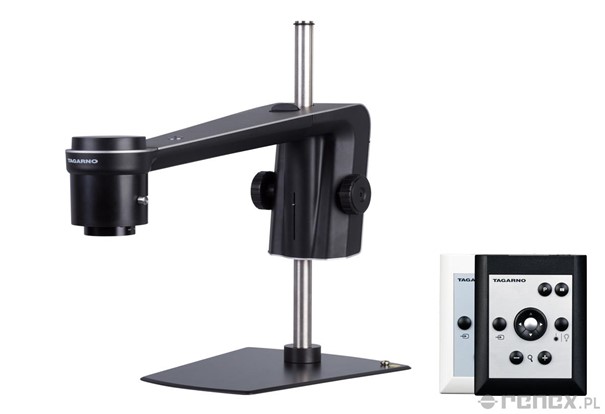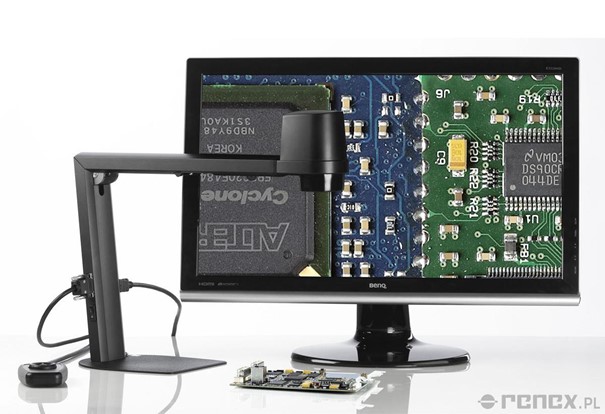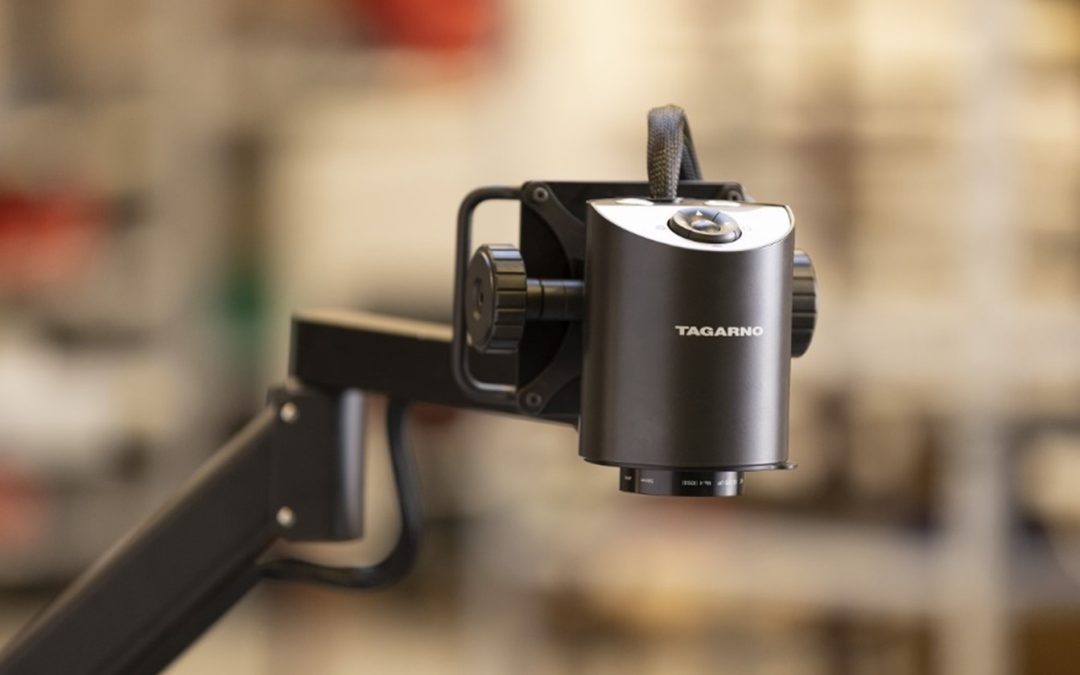The electronics market demands miniaturization, which increases the need for precise control when working with miniaturized components. In this article, we will look at the range of applications of one of the key devices in the electronics industry that enables work on miniature elements – the digital microscope.
Market pressure forces manufacturers to increasingly miniaturize electronics. New phones, computers, and other multifunctional devices released every year must have greater performance without increasing in size to remain competitive. As a result, electronics are using smaller components in higher densities. This creates a domino effect, forcing not only manufacturers but also their subcontractors and electronic device service centers to adapt to the realities of working with highly miniaturized electronics.
The problem associated with the demanding inspection of electronics can be seen as early as the visual control stage. Standard magnifying glasses with lighting at workstations are now auxiliary tools, allowing only a cursory inspection of the entire electronic circuit. The magnification they offer (usually from 1.7x to 3x) is definitely insufficient for working with the smallest electronic components. Microscopes have started to be used as a solution to this problem. Two types of these devices, which are currently the most popular, can be distinguished: stereoscopic microscopes and digital microscopes.
Stereoscopic microscopes are popular and widely used devices in various fields of science and industry. Their optics allow for accurate and spatial observation of points. However, their body position forces the operator, who must bring their eyes close to the eyepieces and remain in this position throughout the work, which is a significant drawback. This is particularly the case with supplementary assembly on a production line, where operators must work hunched over for entire workdays. This, in turn, can lead to musculoskeletal disorders, headaches, and eye strain. Another disadvantage is the limitation to only one person working on the device at a time. For these reasons, digital microscopes are becoming increasingly popular, as they solve these problems. In the electronics industry, digital microscopes, which are more comfortable to use than traditional stereoscopic microscopes, are gaining popularity.

Digital microscopes, also known as video microscopes, use a digital camera with a macro lens that transmits a live image to a monitor. This type of microscope allows for comfortable work in an upright position, minimizing the risk of occupational musculoskeletal disorders, headaches, and eye strain. Moreover, digital microscopes allow several people to work on one device simultaneously, significantly increasing work efficiency. Unlike conventional stereoscopic microscopes, digital microscopes enable the operator to comfortably set the monitor and view the image in their chosen position, allowing work in an upright position. Additionally, the image can be analyzed by several specialists simultaneously, and through remote image transmission, even by specialists working remotely. This flexibility in work brings new, dynamic ways of working, greater inspection confidence, and innovative ideas.

Digital microscopes allow for high magnifications, even greater than stereoscopic microscopes, reaching up to 600x. They usually work in high resolution 1080p/60Hz. However, there are certain limitations resulting from the principles of photography. Digital camera sensors have a smaller tonal range than the human eye, which can lead to underexposure or overexposure of very bright and dark areas at high magnifications. Nonetheless, digital microscopes are today the most popular and highly versatile inspection devices.
One of the most desired devices in electronics production is the TAGARNO MAGNUS TREND FHD, which offers a realistic image of the highest quality without interference and delays. By displaying the image on a monitor, the operator can work comfortably in an upright position. The device also has a large working area, allowing the use of various tools used in the electronics industry. It is an ideal solution for repair and modification stations.
Digital microscopes are used in many fields, including ongoing inspection. Their main task is to enable quality control and the production process at various stages of production. Similar devices are also used in design departments when creating prototypes, where, in addition to inspection, they also enable archiving the progress of work and potential imperfections in the process. Among the optimal solutions is the TAGARNO MAGNUS ZAP FHD device, which has a built-in controller, eliminating unnecessary cables, and is mounted on a stable arm, ensuring user comfort and ease of positioning the camera lens over the inspected PCB.

For this purpose, the monitor can be split into two parts, making it easier to compare and analyze data. Additionally, digital microscopes allow for contactless and very precise measurements of details, which is particularly important in the electronics and mechanical industries. By saving successive images during work with digital microscopes, it is possible to maintain detailed documentation of work progress, detected errors, and technological changes introduced. This way, it becomes easy to track the history of a project or production process, translating into efficiency and quality of work.
Podsumowując
With the progress of miniaturization in the production and servicing of electronics, digital microscopes have become an indispensable tool in the industry. Before purchasing, it is worth consulting with an experienced advisory partner and testing the device in action. RENEX Group, one of the largest and most experienced companies in the electronics industry, offers advisory support for entrepreneurs interested in developing electronics production and service in Poland and Central and Eastern Europe. The devices from the RENEX offer can be tested in action on the production line at the Technology and Training Center. TAGARNO digital microscopes are also available for client testing. For more information, you can contact RENEX technical and commercial advisors at dth@renex.pl or visit the website www.renex.pl.
